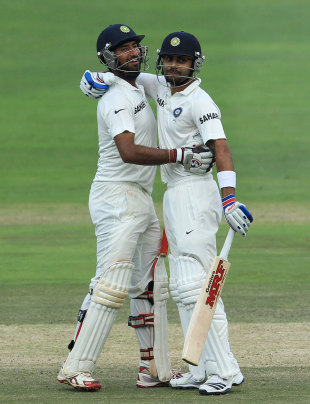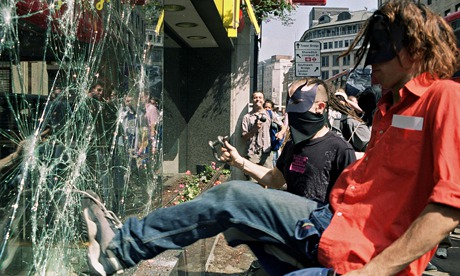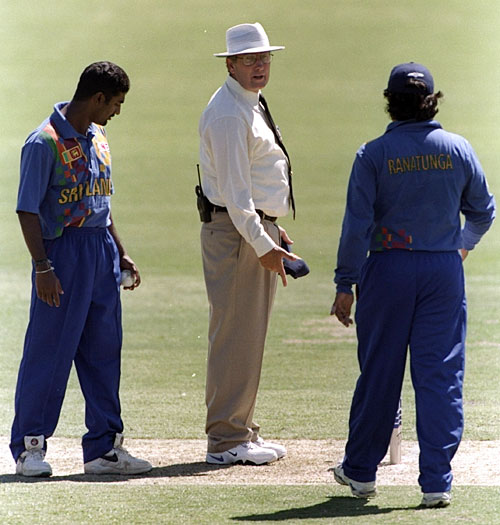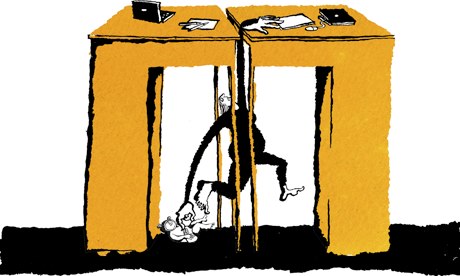He's in inexorable form, but his best is still ahead of him, and that is a forbidding thought for the bowlers he comes up against
Martin Crowe in Cricinfo
February 4, 2014

| |||
Related Links
Players/Officials: Virat Kohli | Sachin Tendulkar | Rahul Dravid| Cheteshwar Pujara | Virender Sehwag
Series/Tournaments: India tour of New Zealand
Teams: India | New Zealand
| |||
"The day came when the risk to remain tight in a bud was more painful than the risk it took to blossom."
- Anaïs Nin
When I consider this wonderful insight from the great American author, I wonder about what it takes to fulfil one's own "greatness", to blossom, bringing alive the very depths of one's soul. When I read Nin again and she says, "Life shrinks or expands in proportion to one's courage", I start to understand what can truly take us forward, beyond the ordinary, into the realm of greatness.
India are a vast energy, a thriving modern-day eruption. They are forcing their will on the world, in particular on the cricket world. Sachin Tendulkar did it for nearly two and half decades with a keen eye and trusty blade, transfixing all of us with his serenity and his strokes. He was the king of great. Around him emerged more versions of it - Rahul Dravid andVirender Sehwag, for example. Yet it was Sachin who spread the word loud and afar.
And with his departure rises Virat Kohli. In some ways this young giant is a combination of all those three, learning a bit from them all to shape his own unique creation. He is the next chosen one. He exudes the intensity of Rahul, the audacity of Virender, and the extraordinary range of Sachin. That doesn't make him better, simply sui generis, his own unique kind.
In many ways, he follows the essence of life: loving what he does and doing what he loves, and learning all he can, often at a rapid pace. Kohli has gone from pupil to teacher quickly, and his next level is to become a master. That he will achieve. It's in his eyes.
I watched this young 19-year-old when he joined Royal Challengers Bangalore in 2008, for the inaugural IPL. He was bursting to impress. Often he fell victim to his own seduction, his growing, glowing image, mixed in with his confusion about who to bat and be like, as he had so many choices. I often encouraged him to simply play straighter, be wiser in shot selection, put the odds more in his favour. Alas, he was too young, and rather than listen to a crusty old stager from god knows where, he was intent on being like the heroes of the day and indulging in the new rage of sending the ball into orbit.
Over time, he found that his own style and his stamp and signature were more than enough for him to hold his own. His ownership of the No. 3 position in the Indian one-day team has secured his legacy long term; now he just needs to go to the well day in and day out, to cement it.
His badge is one of courage. He is fiercely focused. He is often fiery and emotional, possibly a product of his upbringing in Delhi. Yes, a fire burns within, sometimes wildly. His aggressive streetfighting qualities are worn on his sleeve. He looks for a fight. He singles out opposition for face-to-face interrogation; he even confronts officials.
He will need to learn rapidly that to be a true leader and role model to millions all over the globe, the ugly stuff needs to be tamed, even put away, while retaining the right to find that balance of challenge and the correct conduct. It's an important lesson, one Sachin and Rahul will have taughtn him, yet his own restlessness is still dominant. Someone needs to guide him on this vital code.
At present he is a beacon in this rebuilding team, while some of those around him who have come in to fill the void left by the big three struggle to cope. Already he is the leader of the batting line-up, with just 22 Tests to his name, and so a huge responsibility beckons.
Kohli's audacity is shameless. He is bold and beautiful in his shot selection and his style. When in the mood he can carve anyone apart, just as Sehwag did when awoken. Kohli will need to be reminded of Sehwag, that temporary loss of form that came in patches and grew to become one patch at the end. He needs to keep working the engine and stoking the fire. He will, without question.
Not unsurprisingly, Kohli will have learned mostly from Sachin, and even if it isn't so obvious, it's slowly becoming clearer. His stance is more closed than Sachin's, resulting in the leg-side stroke played around the pad, yet it is straightening year by year. By the time he reaches full throttle in a couple of years he will be perfectly aligned, as the master was. His last-second tap of the bat as the bowler gathers is such a classic and vital element from the Sachin book. This last tap sends a spark of electricity through his body and his eyes, then feet, then through his flowing vortex sword, all coming alive as one. Every ball is treated with puissance, a mighty force.
| Kohli's audacity is shameless. He is bold and beautiful in his shot selection and his style. When in the mood he can carve anyone apart, just as Sehwag did when awoken | |||
Kohli is forming an unprecedented record in one-dayers for scoring hundreds. The quest to do so in Test cricket is at hand. He has five so far in 37 innings, and should rightly correct that ratio, to one every six innings at least, as time unfolds. Natural, too, will be the desire to score double-hundreds, big daddies as they have become known. His positioning at four will be the ideal stage in which to show a prowess even Sachin would be proud of.
Helping his cause will be the indestructible Cheteshwar Pujara. They are the same age and have the same hunger to carry India as Dravid and Tendulkar did. They will bat together, carrying each other in the vein of the finest combos in the game. Pujara doesn't have the same range of strokes as Kohli, yet he has a vast reservoir of concentration and resolve. Kohli will pass his final exam, that of scoring the huge scores, by watching his more studious partner. This will complete his finishing-school education. From there, Kohli will master the world.
How will New Zealand dismiss these two in the coming weeks? Higher energy. They have to hit the Indian top order with absolute precision, pace, swing and accuracy, on or just outside stump. They must bowl one side of the wicket, use two lengths - the shoulder-high bouncer with muscle, and the one that hits the top of off stump with pump.
Muscle and pump. Anything else will be dispatched or manipulated. And they will need patience from session to session. Dismissing either Pujara or Kohli in under two hours' batting is a dagger in India's heart. If it doesn't come early on, the energy must not drop. This, in essence, is how you win Test matches.
Richard Hadlee did it with support from honest, resilient lieutenants and a surface with enough juice. He found his arousal level and paced it through the day. His last spell of the day could be just as telling and exacting as his first. This is the mentality Tim Southee, Trent Boult, Neil Wagner and Corey Anderson will need to execute in the two Tests ahead. If they don't, then they'd better learn fast.
It will be a fascinating series. Sadly, just as it hots up it will be over. It's a waste. Another example of wayward administration, but let's not go there. Instead, let's go to the Tests looking to experience a new breed of excellence: Kohli and Pujara against Kane Williamson and Ross Taylor.
Whoever scores the most hundreds between the four will hold the upper hand, for they will deny and dent the ability of the opposition's attack to clear out both innings to win. Whichever pair fails to notch the big scores or partnerships will allow the opposition the chance to penetrate the lesser mortals who surround these elite.
All four are in mesmeric form. It won't help the sleep patterns of the bowlers opposing them. Yet I am predicting the locals will sleep better in their own beds. For India the nightmare might just continue.
But then again there is that maturing force called Virat Kohli.




